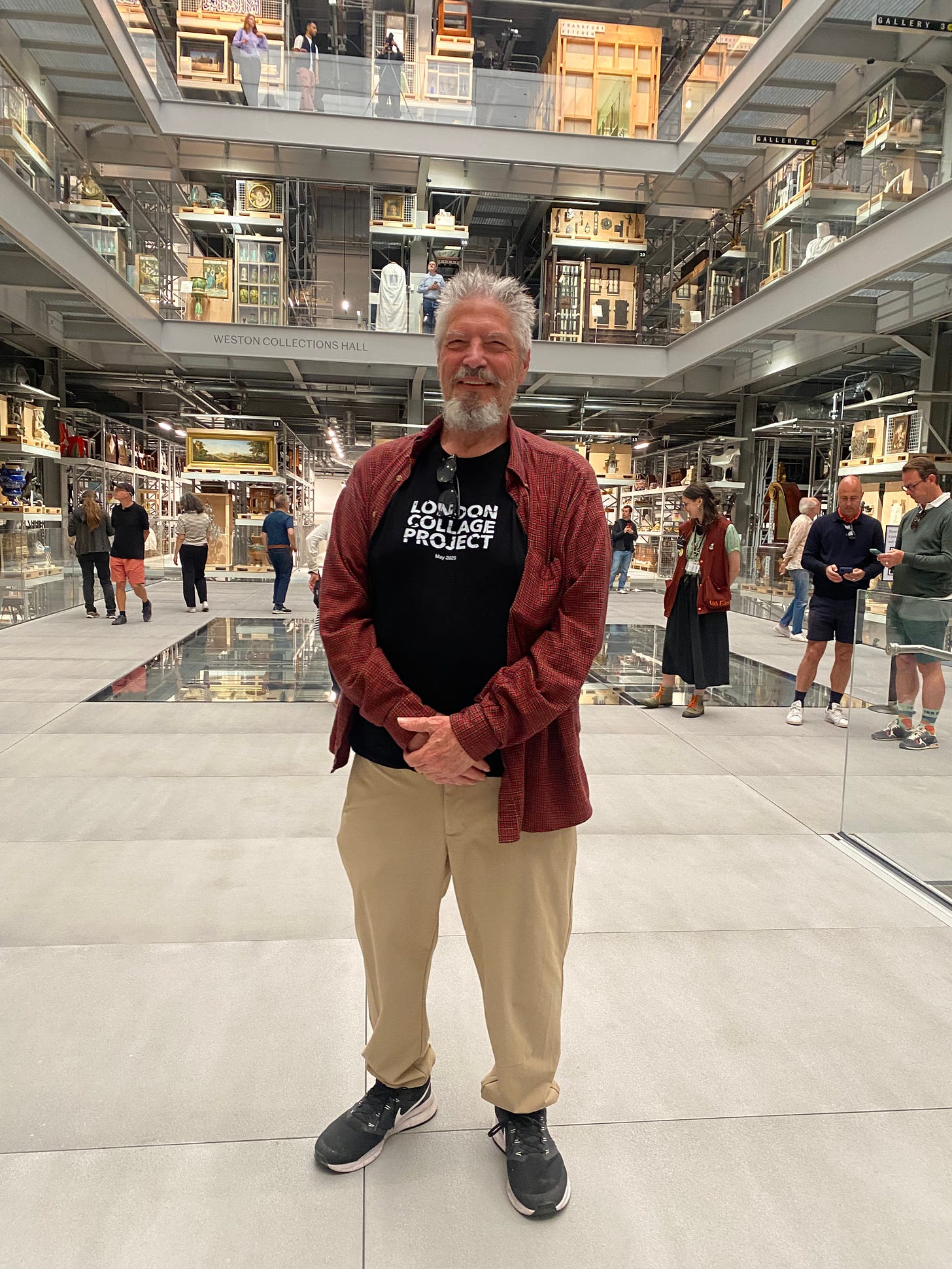No. 1: Proof of Life: an Introduction On Collecting and What It Might Mean Now.
Proof of Life Series: No. 1

Introduction: On Collecting and What It Might Mean Now
After the recent trip to London for the Collage Residency or Collage Safari or Collage Project or Collage Expedition or maybe Collage Hothouse or Intensive Collage Immersion Workshop - it was all of these things - I also visited - with some of the crew - the Sir John Soane Museum, and the newly opened V&A East Storehouse.
These two very different but equally evocative institutions: the Sir John Soane Museum, and the V&A East Storehouse were very amazing. Each, in its own way, left me thinking more deeply—and more personally—about what it means to collect, to preserve, to hold on to things. And what, exactly my own project, the Ontological Museum is becoming in the shadow of these much larger structures.
The Sir John Soane Museum founded in 1813 struck me like a beautiful fever dream: three adjoining apartments turned temple of memory, with rooms crammed within rooms with architectural fragments, classical casts, Egyptian sarcophagi, curious mirrors, and paintings hinged on walls that open like secret doors. Every corner hums with a kind of personal cosmology. It is clearly the work of one man’s vision—ambitious, eccentric, orderly in its way, and steeped in the assumptions of empire and Enlightenment certainty. To walk through it is to walk through one person’s belief that architecture and collection could stabilize meaning—that to arrange the world into rooms is to bring it under control.
In contrast, the V&A East Storehouse, the V&A founded in 1852 felt dense but open, infrastructural, institutional by design. It’s a museum that shows you the back of the house—the racks, the drawers, the archives, the processes of conservation. Its ethos is one of transparency and accountability, an attempt to reckon with the legacy of empire by exposing the very machinery of collecting. It says: here’s how we’ve gathered what we’ve gathered. Now let’s talk about it.
I found both spaces compelling. But I also came away feeling that what I’ve been slowly building - the Ontological Museum - is something else entirely: Proof of Life.
I don’t collect in the way Soane did, through inheritance and acquisition and cultural capital. And I don’t have the institutional support or funding that makes something like the V&A East possible. What I have is a practice. A lifelong habit of exchange and attention, of resonance and offering. I gather what is given. What arrives through correspondence and chance meetings. What appears in the moment of mutual recognition.
The Ontological Museum is not built on conquest or custody but through communication using the Internet and personal interaction. It is not even a museum in the traditional sense. It is a relational field—a place for gifted work, for things that come not through ownership but through shared impulse. Mail art. Poetry, Collage. Asemic Writing, Vernacular Photography, Fluxus Objects. Small gestures made by people trying to stay awake inside the contemporary moment. It is a museum of connection and interaction, not solely for collection but as a record that we were here, we connected.
This kind of archive is temporary, fragile, unendowed like a butterfly collection. There is no budget. There is only continuity—a slow accumulation of meaning and recognition passed from one artist to another, across decades. It might never become a physical space in my lifetime but who knows? Anything can happen. Or it might appear briefly as like it often does as pop up exhibitions in ‘locations of opportunity’, like a shimmer or a dream, wherever two or more artists meet and remember what they’re doing here - connecting.
But I do think it matters. I think there’s value in this small, unmonumental practice of paying attention and honoring each other, of gathering what comes through real connection, not filtered through the gauntlet of status or market. The Ontological Museum is a space for those correspondences—not the kind sent to galleries or institutions, but the kind you might send in a plain envelope, trusting that someone at the other end will open it with care.
The collection is intentionally composed of small works that are highly mobile. An entire unframed exhibit could be carried around in a briefcase, or in some cases, even in your pocket. It is intentionally conversational in nature: private, intimate, but then so are diamonds.
In the face of behemoth institutions, perhaps the most radical thing artists can do is keep going in their own way—listening, responding, and building something small, real, and alive among ourselves for ourselves.
In the coming weeks I am going to post my reflections on these experiences of meeting, sharing and collecting. These will all be filed in the Ontological Museum Section here on the Touchonian.
By the way, I messed up and lost my domain name ontologicalmuseum.org through some billing negligence on my part a few months ago but I did buy ontologicalmuseum.com and will hook that to the website sometime soon. Bummer.



I worked at the Soane museum for sometime, a magical place especially on the days its closed to the public. Sounds as if you had a successful and pleasurable visit to the UK.
Your perspective and poetic expression starts my day with delight and reflection!
Grateful!